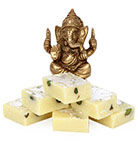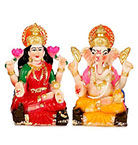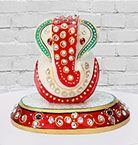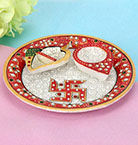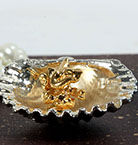How is Ganesh Chaturthi Celebrated?
Celebrations of Ganesh Chaturthi across India and outside
One of the major festival of our tradition and culture is Ganesh Chaturthi which is observed mostly by the Hindu people. In general, people bring an idol of Lord Ganesha to their home and worship for 10 days and on the 11th days the grand visarjan occurs. This visarjan or immersion of Lord Ganesha in some water body is a musical and colorful procession. When the festival is organized by some local party or club, they prefer to bring in giant size idols of Lord Ganesha and continue with music, dance, and other cultural shows or events for 11 long days. This non-stop celebration is a lively one and people really look up to spending some nice time with their loved ones.
Basically in India, Ganesh Chaturthi is celebrated at a large scale in states of Madhya Pradesh, Maharashtra, Gujarat, Goa, Karnataka, Kerala, Andhra Pradesh, Telangana, and Tamil Nadu. As the zones are different, there are slight change in way of worshipping or celebration of this festival.
If we look closely into the mode of celebration, we find two stark difference in the way Ganesh Chaturthi is celebrated at home and in public. In Maharashtra, it seems like every family is celebrating their type of Ganesh Chaturthi. Each and every state is identified with some sort of a festival and Maharashtra is famous for its Ganeshotsav.
Ganesh Chaturthi at Home
In homes of Maharashtra, the families install small and colorful clay statues of Lord Ganesha to be worshipped during the festival. Flowers and durva or the young grass, karanji and modaks are offered during the morning and evening worshipping sessions. In Maharashtra, the Marathi aarti composed by the 17th century saint Samarth Ramdas "Sukhakarta Dukhaharta" is sung in honor of Lord Ganesha. The families decide when to end the celebration and that obviously varies. If Ganesha is worshipped at home, the festival may end after 1 and a half, 3, 5, 7, or 11 days depending on the wish of the host. In Maharashtra, one would also see Hartalika that is observed with a fast by the women of the fmailies on the day prior to Ganesh Chaturthi. Gauri festival also occurs here with installation of idols of Gauri which is the other name of Devi Durga.
In Konkani culture of Goa, this Ganesh Chaturthi is known as Chavath or Parab or Parva. Lord Shiva and Goddess Parvati is worshipped by the fasting womenfolk of the family. Ghumots, Pakhavaj or two headed drum, and crash cymbals are played all through the rituals. The very next day is kept for Navyachi Pancham when fresh paddy from new harvest is brought from the fields to continue the worship. During this festival people turn strictly vegetarian.
Gowri festival precedes Ganesh Chaturthi in Karnataka while in Andhra Pradesh, Matti Vinayakudu ie. Clay statues of Lord Ganesha and Siddhi Vinayakudu ie. Turmeric statue of Lord Ganesha are worshipped at home with Plaster of Paris idols.
Ganesh Chaturthi in public:
Local groups of youth, association of people or clubs, or a group of businessmen or tradespeople organize Ganesh festival in a large way. Funds are collected from public or donations are given by rich people. The idols or statues of Lord Ganesha are then brought into mandaps or pandals and a series cultural programs are followed. Free medical check-up, blood donation camp, distribution of food, sweet, and clothing to the poor and needy also form a part of the festival if organized by clubs or groups. Just like the huge show of Dusshera in West Bengal, this Ganesh Chaturthi festival is something more than the religious significance. There is an economic angle to it also. In Mumbai, Pune, Surat, Hyderabad, Chennai, and Bengaluru, many artists, industrialists, and businessmen find a profitable way of income for this festival.
In Tamil Nadu, this festival is known as Vinayaka Chaturthi or Pillayar Chaturthi. It falls on the fourth day after the new moon in the month of Avaṇi in the Tamil calendar. One would find idols made up of clay or papier-mache as plaster of Paris is banned in this state. Very interestingly, idols of Lord Ganesha here are also made up of coconuts and other organic things. After worshipping or several days, the idols are immersed in the Bay of Bengal.
In Kerala the name of this festival is Lamboodhara Piranalu and it falls in the month of Chingam.
Last but not the least, in Thiruvananthapuram, you would find a parade marches from the Pazhavangadi Ganapathi Temple to Shankumugham Beach, with tall statues of Lord Ganesha which is made out of organic items only. Another interesting fact is that milk is immersed in the sea.
Apart from our own India, you would also find the celebration of Ganesh Chaturthi anywhere across the world where Hindu culture is breathing. UK is a major place of Indian immigrants and the Hindu Culture and Heritage Society of Southall celebrates this festival in Vishwa Hindu Temple. It started form the year 2005 and the idol is immersed in the Thames at Putney Pier.
In North America, Canada, Malaysia, Mauritius, and Singapore, one can see massive celebration for Ganesh Chaturthi.

